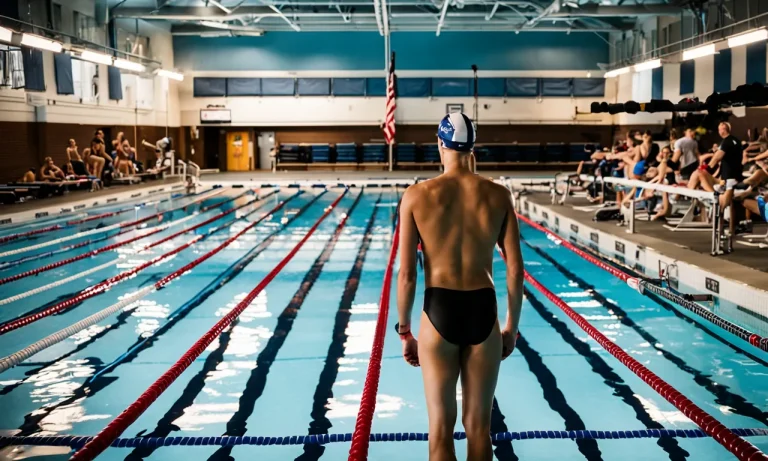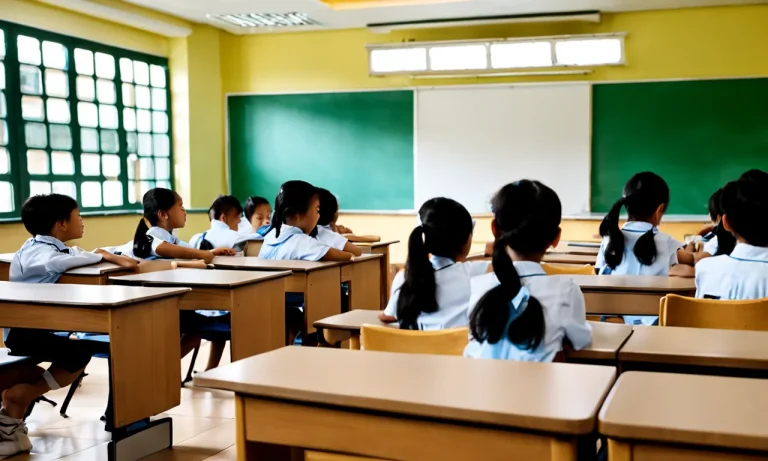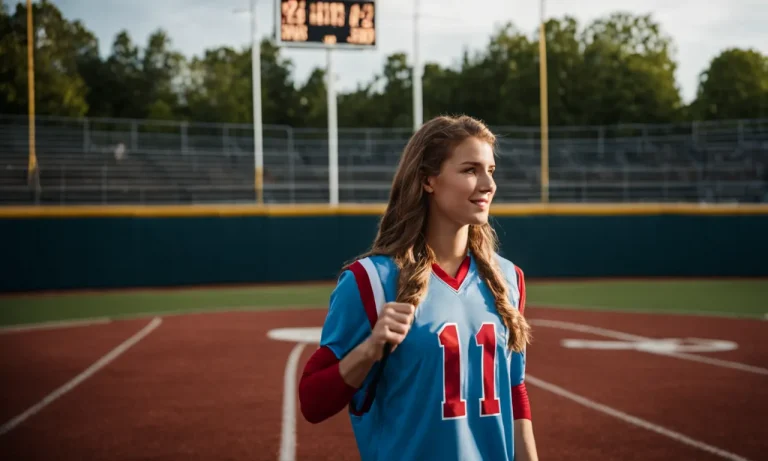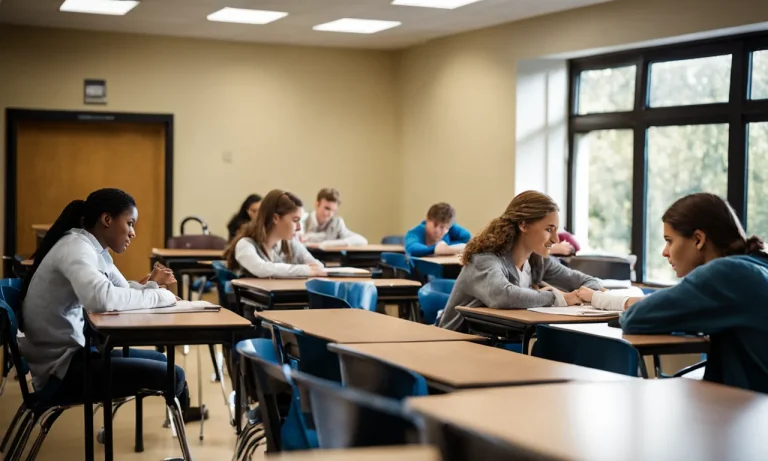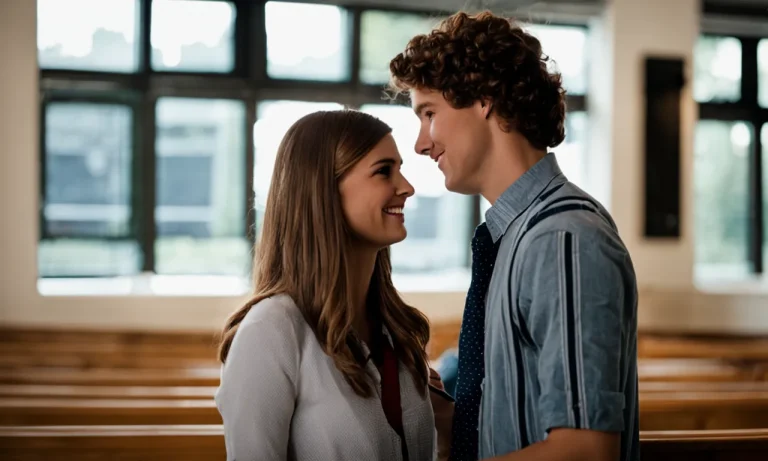Deciding between Abeka curriculum and public school curriculum for your child’s education can be a difficult choice. Parents want to ensure their children receive a high-quality education that prepares them for the future.
In this comprehensive guide, we will compare and contrast Abeka curriculum and public school curriculum across several factors to help you make the best decision for your family.
If you’re short on time, here’s the quick answer: Abeka curriculum tends to be more traditional, textbook-focused, and conservative compared to public school curriculum. Public schools vary widely but generally aim to align with state education standards.
Look at the teaching philosophy, subjects covered, teaching methods, and cost to choose what aligns best with your goals.
Teaching Philosophy and Goals
Abeka’s Teaching Philosophy and Goals
Abeka, a well-known Christian curriculum provider, has a distinct teaching philosophy and set of goals. Their educational approach is rooted in the belief that children need a strong foundation built on both academics and character development.
Abeka aims to provide a comprehensive education that nurtures students’ spiritual, intellectual, social, and physical growth. They emphasize the importance of instilling Christian values and biblical principles into every subject, helping students develop a biblical worldview.
Abeka’s goals are centered around equipping students with a solid academic foundation and preparing them for future success. They prioritize mastery of core subjects such as math, language arts, science, and history, while also integrating art, music, and physical education into their curriculum.
Abeka places an emphasis on critical thinking, problem-solving, and effective communication skills, ensuring that students are well-rounded and prepared for higher education or the workforce.
View this post on Instagram
Public School’s Teaching Philosophy and Goals
Public schools, on the other hand, operate under a different teaching philosophy and have their own set of goals. Public education aims to provide equal opportunities for all students, regardless of their background or beliefs.
The primary goal of public schools is to educate students in a way that prepares them for active participation in society, fosters critical thinking, and builds skills necessary for success in the real world.
Public schools focus on providing a well-rounded education that covers a broad range of subjects, including math, science, social studies, language arts, and physical education. They also incorporate the arts, technology, and extracurricular activities to enhance students’ overall learning experience.
Public schools strive to foster a sense of inclusivity, diversity, and tolerance among students, promoting social and emotional development alongside academic growth.
Public school curriculums are typically designed to meet state educational standards, ensuring that students acquire the necessary knowledge and skills at each grade level. They often emphasize standardized testing as a means of assessing student performance and school accountability.
It is important to note that both Abeka and public schools have their own unique teaching philosophies and goals, and the choice between the two ultimately depends on individual preferences, beliefs, and educational needs.
Subjects Covered
Abeka’s Subjects Covered
The Abeka curriculum offers a comprehensive range of subjects to ensure a well-rounded education for students. These subjects include:
- Mathematics
- Language Arts
- Science
- Social Studies
- Bible
- Art
- Music
- Physical Education
Abeka’s emphasis on core subjects such as Mathematics and Language Arts helps students develop strong foundational skills. Additionally, the inclusion of Bible as a subject allows for the integration of faith-based values and teachings into the curriculum.
Abeka also offers a range of elective subjects, such as foreign languages, computer science, and health, giving students the opportunity to explore their interests and expand their knowledge in various areas.
Public School’s Subjects Covered
Public school curriculums vary from state to state and district to district, but generally cover a similar range of subjects as Abeka. These subjects typically include:
- Mathematics
- Language Arts
- Science
- Social Studies
- Physical Education
- Art
- Music
- Foreign Languages
Public schools often follow state-mandated guidelines for curriculum development, which may include additional subjects like health education, technology, and career readiness. The inclusion of these subjects aims to provide students with a well-rounded education that prepares them for various aspects of life.
It’s important to note that while public schools generally cover a wide range of subjects, the depth and focus of each subject may vary depending on the grade level and educational standards set by the state or district.
View this post on Instagram
Teaching Methods
Abeka’s Teaching Methods
Abeka curriculum is known for its traditional teaching methods that emphasize teacher-led instruction and direct learning. The curriculum is designed to provide a structured and systematic approach to education, ensuring that students receive a thorough understanding of each subject.
In Abeka classrooms, teachers typically use a combination of textbooks, workbooks, and teacher’s manuals to guide their lessons. They provide clear instructions and explanations, as well as examples and practice exercises to reinforce learning.
This method allows students to grasp concepts at their own pace and provides a solid foundation for future learning.
One of the key aspects of Abeka’s teaching methods is the use of rote memorization. Students are encouraged to memorize facts, formulas, and important information, which helps develop their recall skills and enhances their overall understanding of the subject matter.
Abeka also places a strong emphasis on character development and moral values. The curriculum includes biblical principles and teachings, helping students develop a strong sense of ethics and morality.
Public School’s Teaching Methods
Public schools typically employ a variety of teaching methods, including both traditional and progressive approaches. The teaching methods used in public schools may vary depending on the school district, grade level, and individual teacher preferences.
In public schools, teachers often use a combination of lectures, group discussions, hands-on activities, and technology-based learning tools to engage students in the learning process. They encourage critical thinking, problem-solving, and collaboration skills to prepare students for real-world challenges.
Public schools also focus on individualized instruction, aiming to meet the diverse needs of students. Teachers may differentiate their teaching methods to accommodate different learning styles and abilities.
This approach allows students to learn at their own pace and fosters a supportive and inclusive learning environment.
Furthermore, public schools often follow state-mandated curriculum standards, which outline the specific knowledge and skills that students should acquire at each grade level. These standards help ensure consistency and accountability across the education system.
It’s important to note that both Abeka and public schools are committed to providing quality education to students. While their teaching methods may differ, the ultimate goal is to equip students with the knowledge and skills they need to succeed academically and in life.
View this post on Instagram
Cost Comparison
When it comes to choosing the right curriculum for your child’s education, cost is an important factor to consider. Let’s take a closer look at the cost comparison between the Abeka curriculum and the public school curriculum.
Abeka Curriculum Cost
The Abeka curriculum is a popular choice among homeschooling families due to its comprehensive and structured approach to education. However, it is important to note that the cost of the Abeka curriculum can vary depending on the grade level and the specific materials you choose.
The cost of the Abeka curriculum typically includes textbooks, workbooks, teacher’s editions, and additional resources such as flashcards and manipulatives. On average, parents can expect to spend around $500 to $800 or over $1000 per year on the Abeka curriculum.
It’s worth mentioning that Abeka offers discounts for purchasing bundles or enrolling in their accredited program, which can help reduce the overall cost.
Public School Curriculum Cost
The cost of the public school curriculum is often covered by the government through taxpayers’ money. As a result, parents do not have to bear the direct cost of purchasing textbooks or other educational materials.
However, it’s important to consider that there are other costs associated with public schooling, such as transportation, uniforms, school supplies, and extracurricular activities. These expenses can add up over time and vary depending on the school district and individual needs of each student.
Additionally, it’s important to note that public schools may require parents to contribute financially through fundraising efforts or voluntary contributions to support various programs and activities.
While the public school curriculum may seem more cost-effective initially, it’s important to weigh the overall expenses associated with public schooling against the upfront cost of the Abeka curriculum.
Ultimately, the decision between the Abeka curriculum and the public school curriculum should be based on your child’s individual needs, your budget, and your educational goals.
Conclusion
In conclusion, Abeka and public school curriculums have some distinct differences in their teaching philosophy, subjects covered, teaching methods and cost. Abeka provides a consistent, traditional curriculum with plenty of review, while public schools vary widely but aim to meet state standards.
Look closely at each option to determine which aligns best to your goals and budget. Reach out to each school to learn more about their offerings. With this guide as a starting point, you can make an informed decision to choose the right curriculum for your child’s needs.

